Good day, everyone! It's the third Sunday of the month, which means it's time for some travel tales and reflections. This will be my last travel related post from the enchanting shores of Lake Atitlán—for now.
Before diving into my personal reflections and photos, let’s set the scene.
El Mirador is an ancient Mayan city hidden deep in the jungles of northern Guatemala. It lies within the greater Mirador-Calakmul Basin that straddles three countries—Guatemala, Mexico, and Belize—covering approximately 6,475 square kilometers. For Irish readers, to put its size into perspective, the basin is roughly equivalent to the combined area of counties Galway and Mayo. It’s vast, it’s all jungle, and it’s accessible only by a multi-day trek or helicopter. We covered 100km in 5 days. Most everyone in our 15 person group had the blisters and body aches to prove it.
I’d like to take you there with me and share some of the moments that stood out on this unforgettable trip.
Highlight 1: Simply walking in dense forest.
We walked through an area of extraordinary biodiversity—the second-largest concentration of jaguars in the world, after Bolivia. In a group, there was a sense of safety, but on the rare occasions I found myself walking at a distance from the others, a mild anxiety arose. Inevitably, the question surfaced: "Has anyone ever been attacked by a jaguar?"
The answer? Only twice.
The first incident involved a guide who stepped into a tent and found himself face-to-face with a jaguar cub. When he turned, the mother was there—never a good situation to be in. She charged, but he managed to escape unharmed.
The second story was not so fortunate. An Australian girl—described as a "crazy hippy type"—decided to trek into the jungle alone, without a guide. To everyone's surprise, she made it to the first ranger station. From there, she continued toward Nakbé, where her screams were later heard. A jaguar had attacked, leaving her with two massive wounds on her thighs. She spent a month recovering in a hospital in Flores before returning to Australia. If nothing else, she’s guaranteed to win the "craziest travel story ever" competition for the rest of her life.
And so, we walked—together. Moving through multiple ecological zones, we noticed how the density and species of trees shifted, just as the soil type changed beneath our feet. Life out here was simple: walk, eat, rest, sleep—repeat.
The walking was intense, exhausting, and glorious.
Highlight 2: Sunsets on Pyramids
You are miles from the nearest town, with no phone signal, no human noise—only the endless hum of the jungle. As far as the horizon stretches, there is nothing but a vast sea of trees. Below, spider monkeys swing through the canopy, pausing to observe the unfamiliar visitors on the lookout point—or perhaps they simply enjoy being admired. Dragonflies dart and swoop, feasting on the evening insects, while in the distance, howler monkeys start up their primal roar. And as you sit atop a 2,000-year-old Mayan pyramid, the sun sinks slowly in the west, painting the sky in its final light.
Each evening, we ended the day's trek with a climb to the top of one of the pyramids. After hours of walking through dense forest, eyes fixed downward to navigate the uneven ground, the moment of rising above the trees was a revelation. Like an eagle in flight, we took in the vastness around us, watching as the jungle transitioned into night. It was a moment of completion—the day's journey fully lived. And with that, we were ready to eat, sleep, and rise again for whatever the next day would bring.
Highlight 3: Meeting Richard Hansen
For as many years as I have been alive, Richard Hansen has been studying this site. To say he knows a thing or two would be an understatement. We were fortunate that he was present when we arrived at the main archaeological station—and even more so that he had time to speak with us.
We were escorted across the compound like subjects being led to their chief. Hansen stood there, deep in conversation with a crew from ABC News U.S., wrapping up business with the anchorman before he was whisked away by helicopter. When they departed, we gathered around Hansen in a loose circle. Hands stuffed into his pockets, he leaned back and began to speak.
Information poured from him.
"You are standing in one of the largest and most important archaeological sites in the world. I pioneered the LIDAR here, mapping the entire basin—it cost a million dollars, but we identified 417 city complexes throughout the site."
He spoke of the jungle’s biodiversity, then warned us of its dangers.
"The biggest risk out here is snakes—especially fer-de-lance. When we cleared this helipad, we found four just lying in the grass. Never go out at night without a flashlight. Those buggers can appear anywhere."
Hansen was a generous and deeply passionate man. Humor came easily to him, but when the topic shifted to the threats facing the Mirador Basin, his tone darkened. Here was someone who operated at the highest levels—securing funding, battling bureaucracy, and fighting to protect this place. He named the U.S. government, the U.N., major funders. Even Mel Gibson had visited—he had considered filming Apocalypto here, but the terrain was too inaccessible. Hansen had served as the film’s chief adviser.
Then came the harsh realities—the threats were not insignificant.
Narco-traffickers are clear-cutting sections of the forest to graze cattle—using them to launder money.
"If they have 500 head of cattle, they’ll claim 5,000. Who," Hansen half-joked, "is going to come all the way out here and start counting cows?"
At one point, Hansen secured $144 million from the U.S. government to protect and preserve the area. But the cartels spent a mere half a million on a smear campaign, painting him as an imperialist who wanted to turn the site into "Disneyland." The campaign worked. The funding was revoked.
Then there were the loggers. Forty wealthy individuals in Flores were profiting from the destruction of the jungle, while the people of Carmelita—the village where all the guides and park workers live—remained in poverty.
Hansen sighed. "It's good you are here," he told us. "It may not be here in ten years. We don’t know if we’re going to win this battle."
Highlight 4: Our Team & the People of Carmelita
Our journey was guided by two men who knew the jungle like the lines on their palms. Walter, younger, stout, and strong, with a wry smile that rarely left his face, had completed over 150 tours. Abel, older, with wise eyes and the quiet confidence of someone who had spent a lifetime in these forests, was the kind of man you'd want at your side in an emergency. He carried his knowledge with pride, always eager to share. At dinner, he would lean forward, resting on the table, and encourage us to ask questions. “I haven’t heard one I don’t know the answer to yet,” he’d say, “but if I do, all the better—I’ll go find it.”
They walked at the front and back of our group, machetes in hand, ready to clear undergrowth or cut a walking stick for anyone who needed it. They rarely showed signs of fatigue. Along the way, they pointed out the uses of different trees and plants—like the rubber trees, which locals had recently begun harvesting again as part of an effort to create a sustainable economy for the forest.
Supporting our journey was an entire team: we had two cooks who worked tirelessly over open fires, preparing simple but hearty meals on a metal plate. Every night, we devoured every last bite. Fresh tortillas were made daily, the masa mixed with water and pressed into perfect rounds. And then there were the horse handlers—two men managing seven horses that carried our supplies, always just ahead or just behind us, moving in steady rhythm with the jungle.
After five days of walking, of minimal comforts, of being so far from the known world, stepping back into the village of Carmelita felt dreamlike. The sun sat high, baking the earth in its late-morning glow. The villagers watched us return, a knowing look in their eyes. They had seen it before—travelers coming back changed, carrying the weight of the jungle in their bones. I couldn’t help but feel, just for a moment, a little like Frodo returning to the Shire.
Highlight 5: Standing of top of La Danta
After days of walking through dense jungle, La Danta stood before us—massive, ancient, almost unfathomable in scale. One of the largest pyramids in the world by volume. The lower levels sat eerily in the evening shade, an air of abandonment and old mystery hanging over it, strangling figs twisting and turning about the stone slopes. From there rose the upper most level, a massive stepped pyramid built from locally quarried limestone, its massive structure rising above the jungle canopy. One has to imagine how it once looked in its full glory—plastered with smooth lime stucco and finished with a coat of vibrant red paint, gleaming under the tropical sun. It would have been visible for miles across the dense forest.
The final climb was steep, our legs already weary from the journey.
Reaching the summit, we were met with a view unlike any other. Miles upon miles of unbroken forest stretched in every direction, an ocean of green swallowing the horizon. No towns, no roads, no trace of the modern world. Only the vastness of the jungle and the silence.
Standing there, on a structure built over two thousand years ago, I felt something deep and wordless—a connection to the past, and sheer awe at the people who achieved this.
After so many days of walking, of feeling small beneath the towering trees, we were now above it all—seeing as the Maya once had, from the highest and largest structure they ever built.
We watched the sunset, and as the light faded, it was time to descend—back into the jungle, back to the present. But something of La Danta has stayed with me, and, I expect will continue to for a long time to come.
P.S. If you enjoyed this, you might like my first book, All Our Wandering vol 1—now available [link]. You can also find me on Instagram [@daithi_sol] for more stories, music, and glimpses of the creative path.
Always happy to hear from you all.

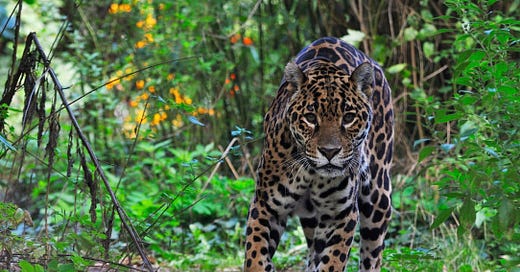






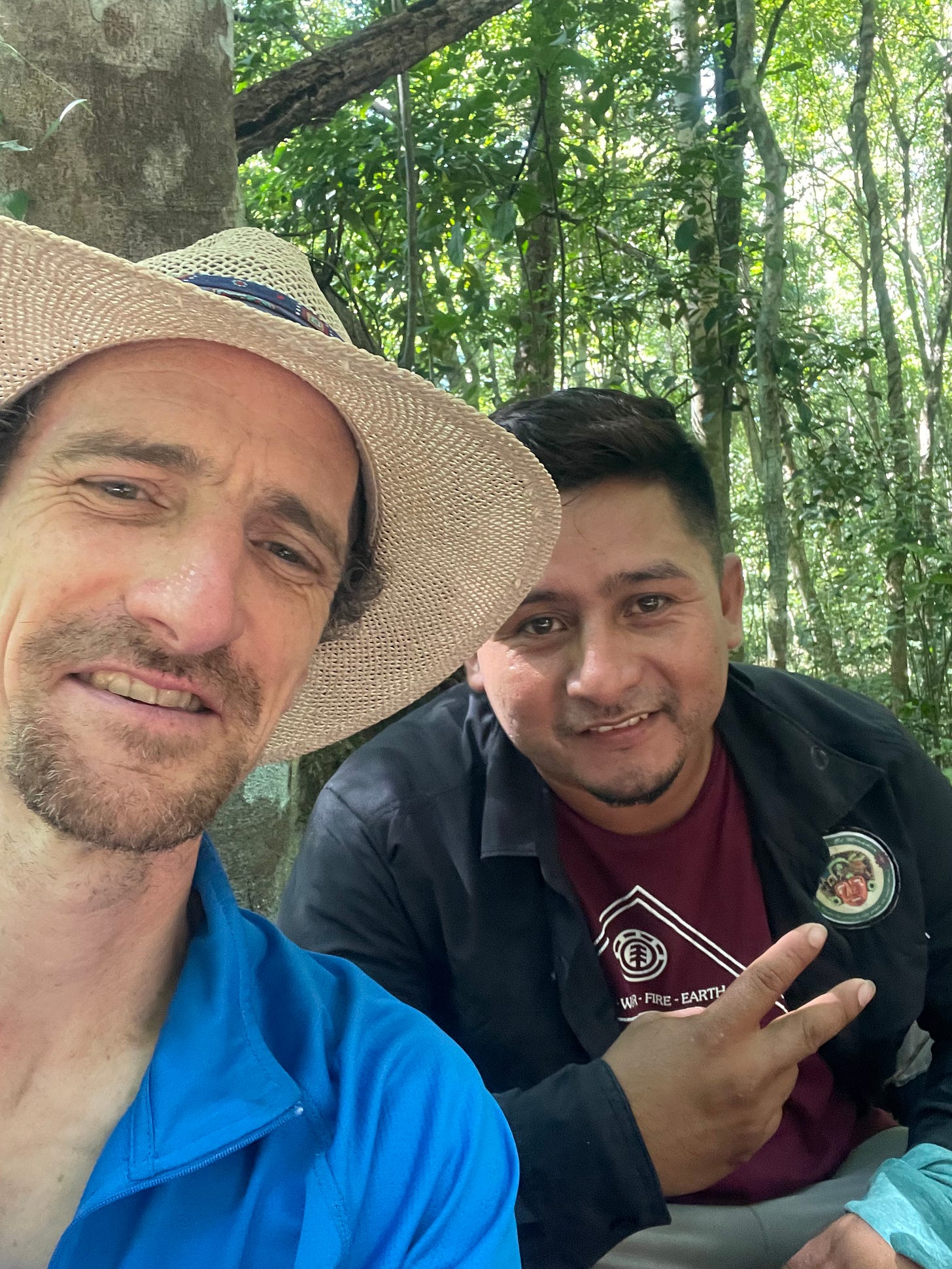
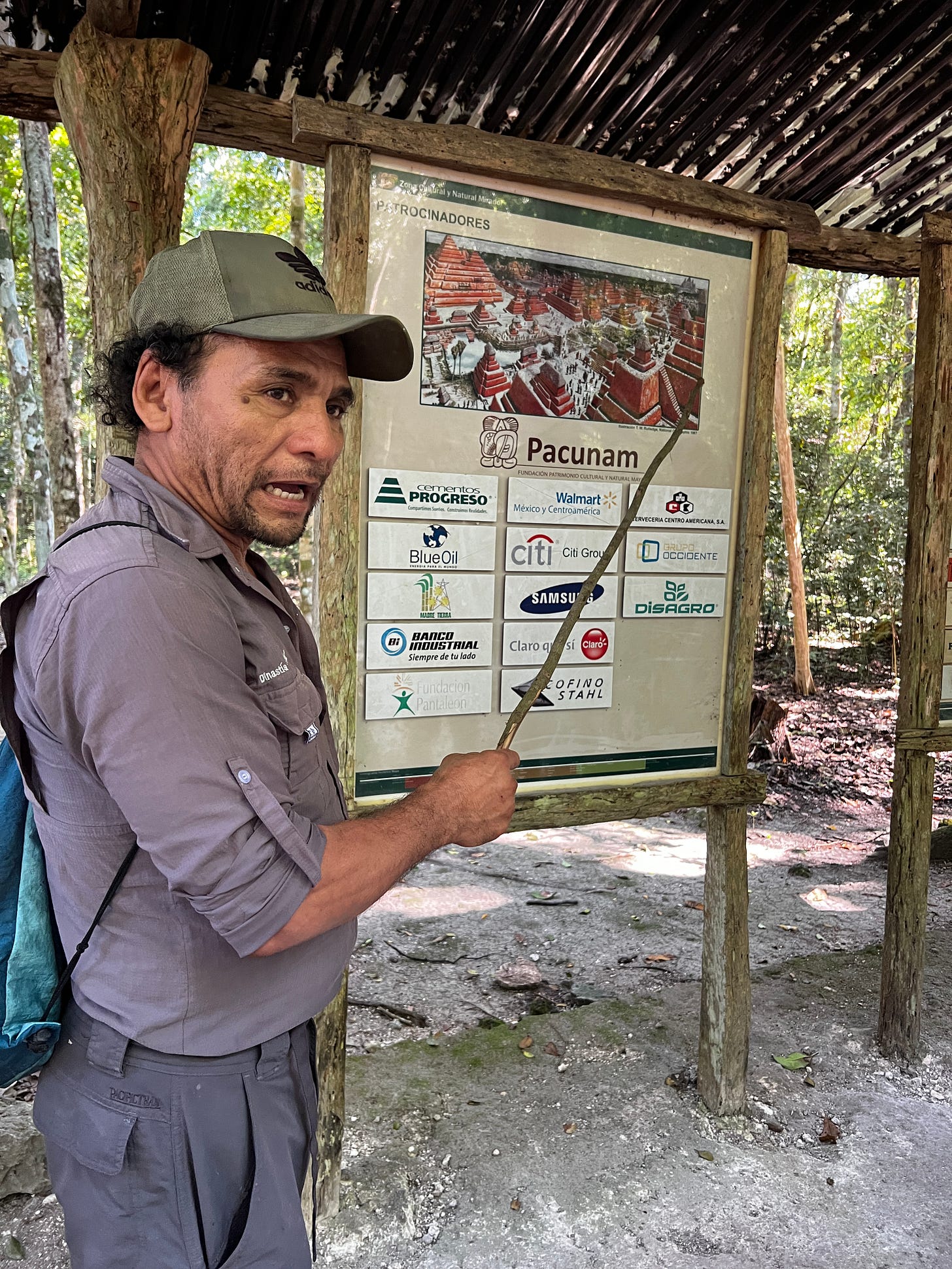
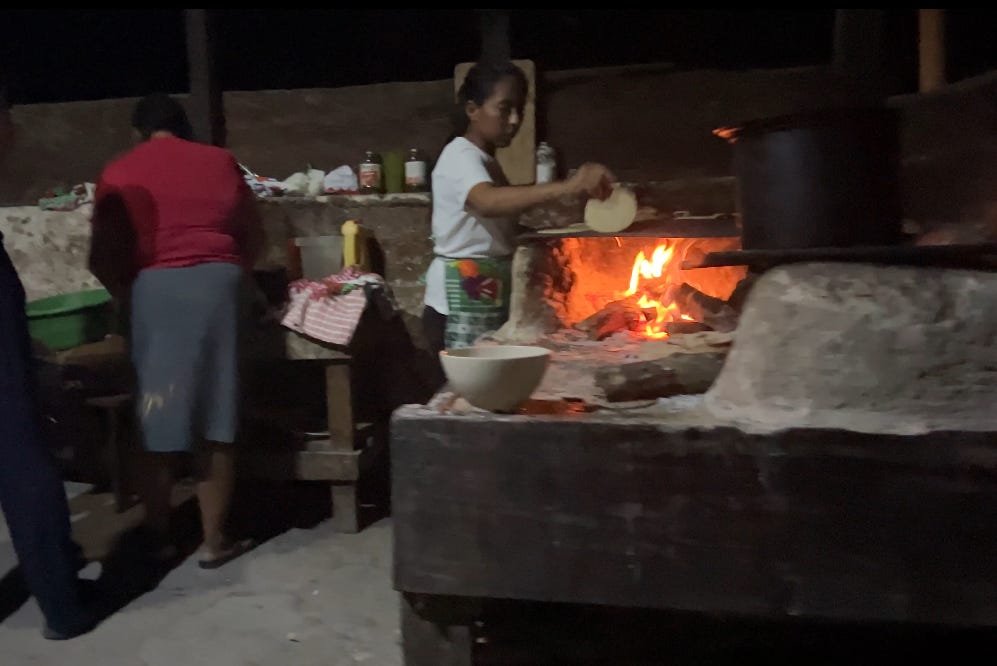
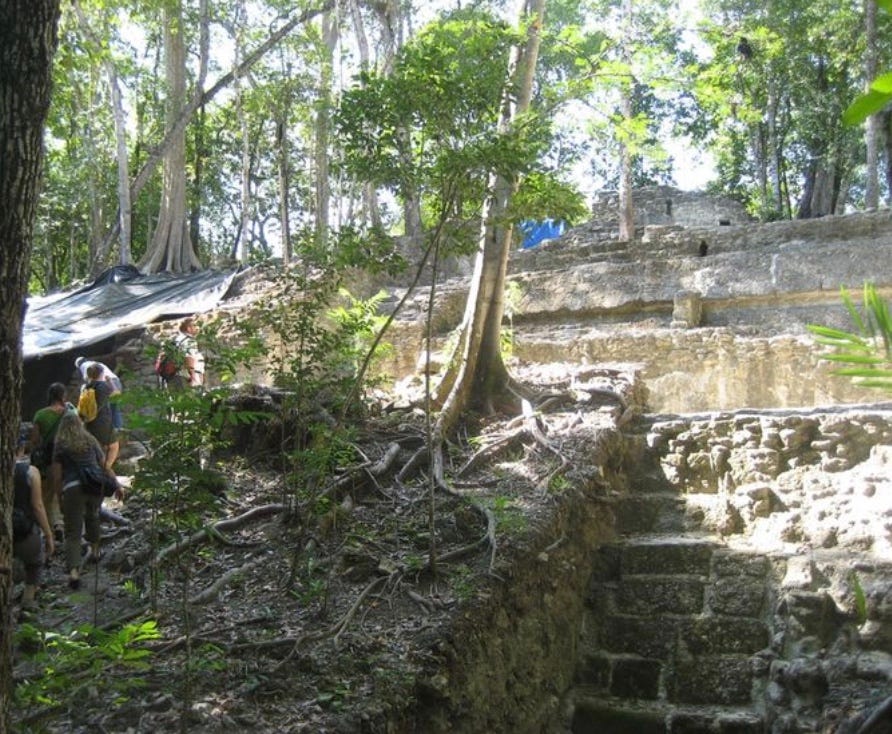

One of the places I longed to visit in Guatemala. Will live vicariously through you in the meantime.
Thanks for sharing.
It sounds like it was a once in a lifetime trip.